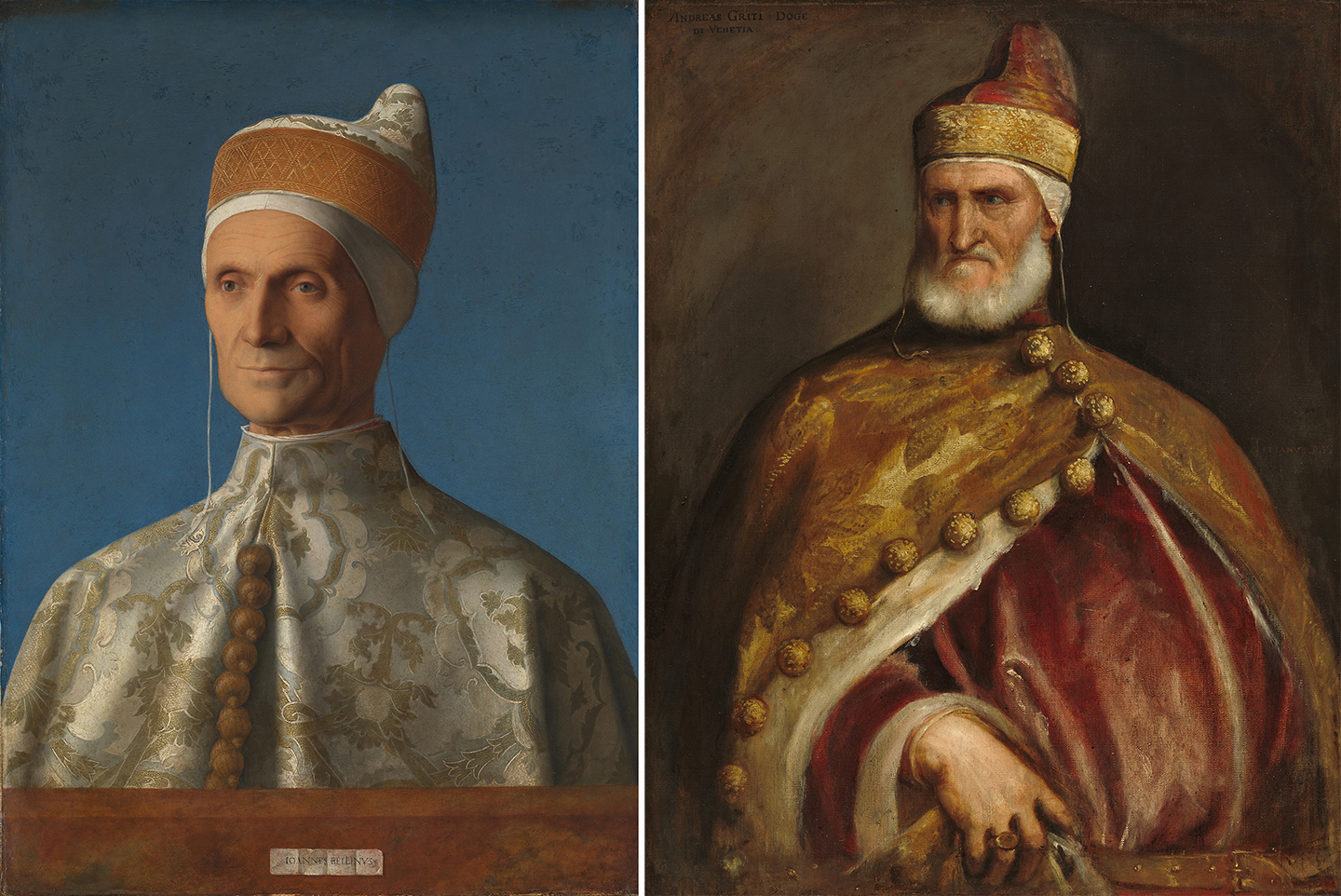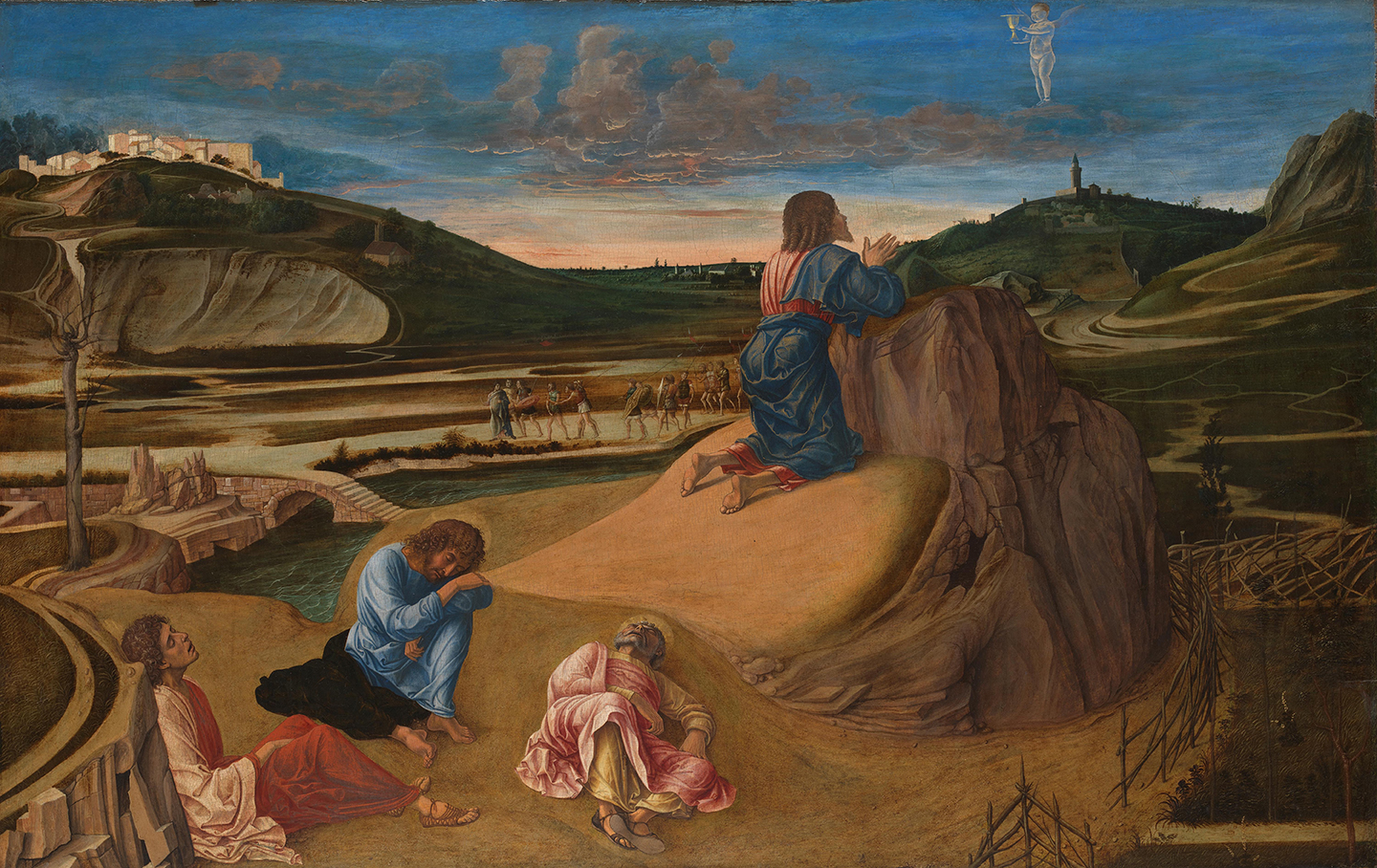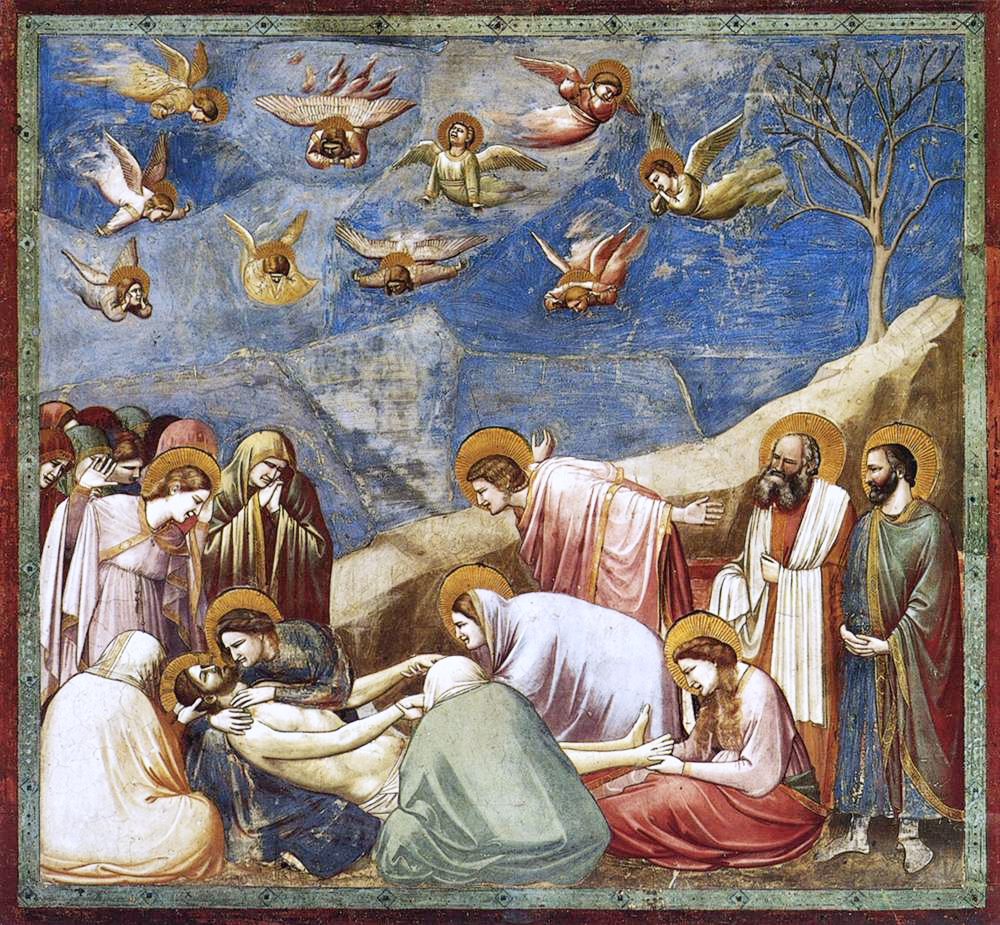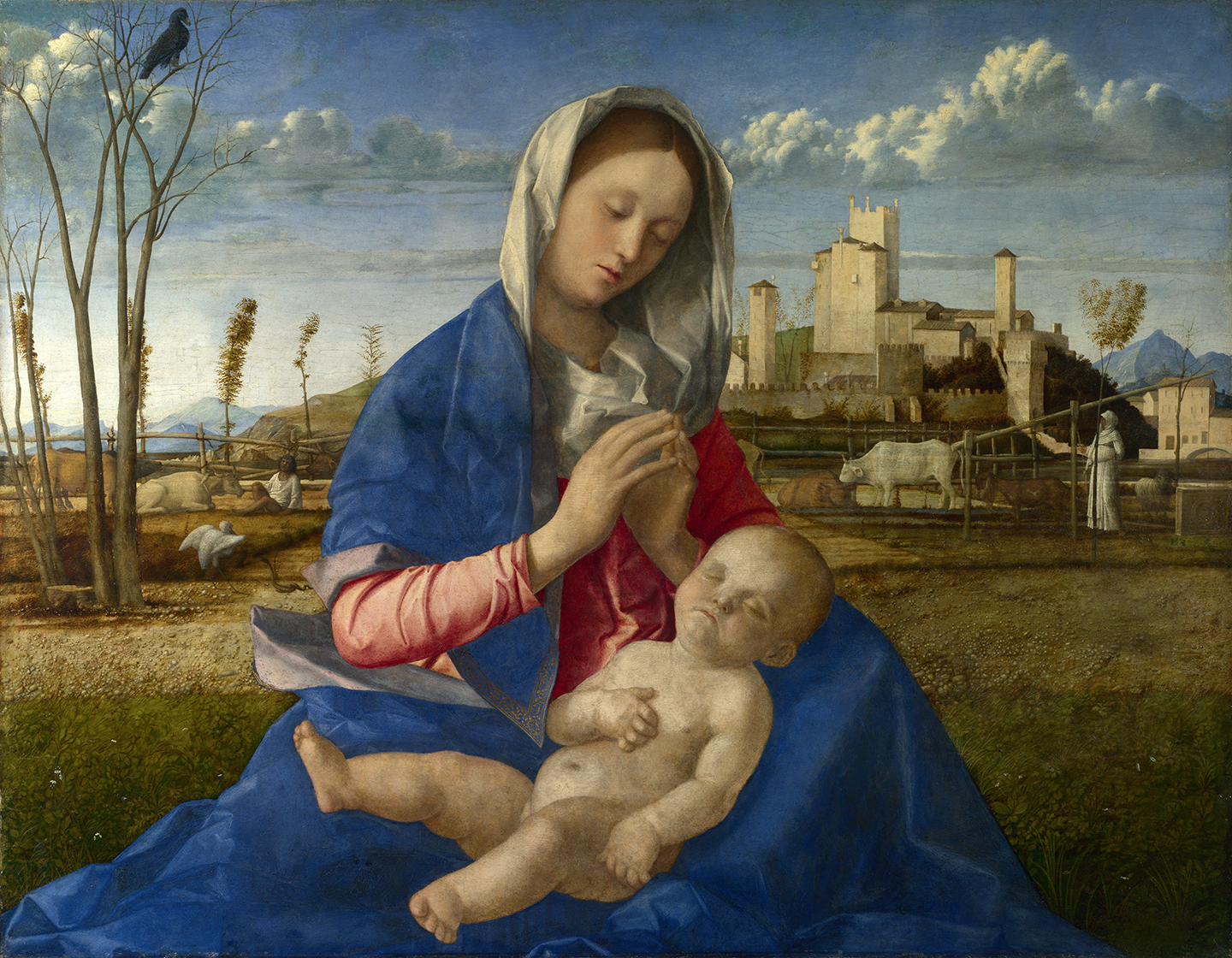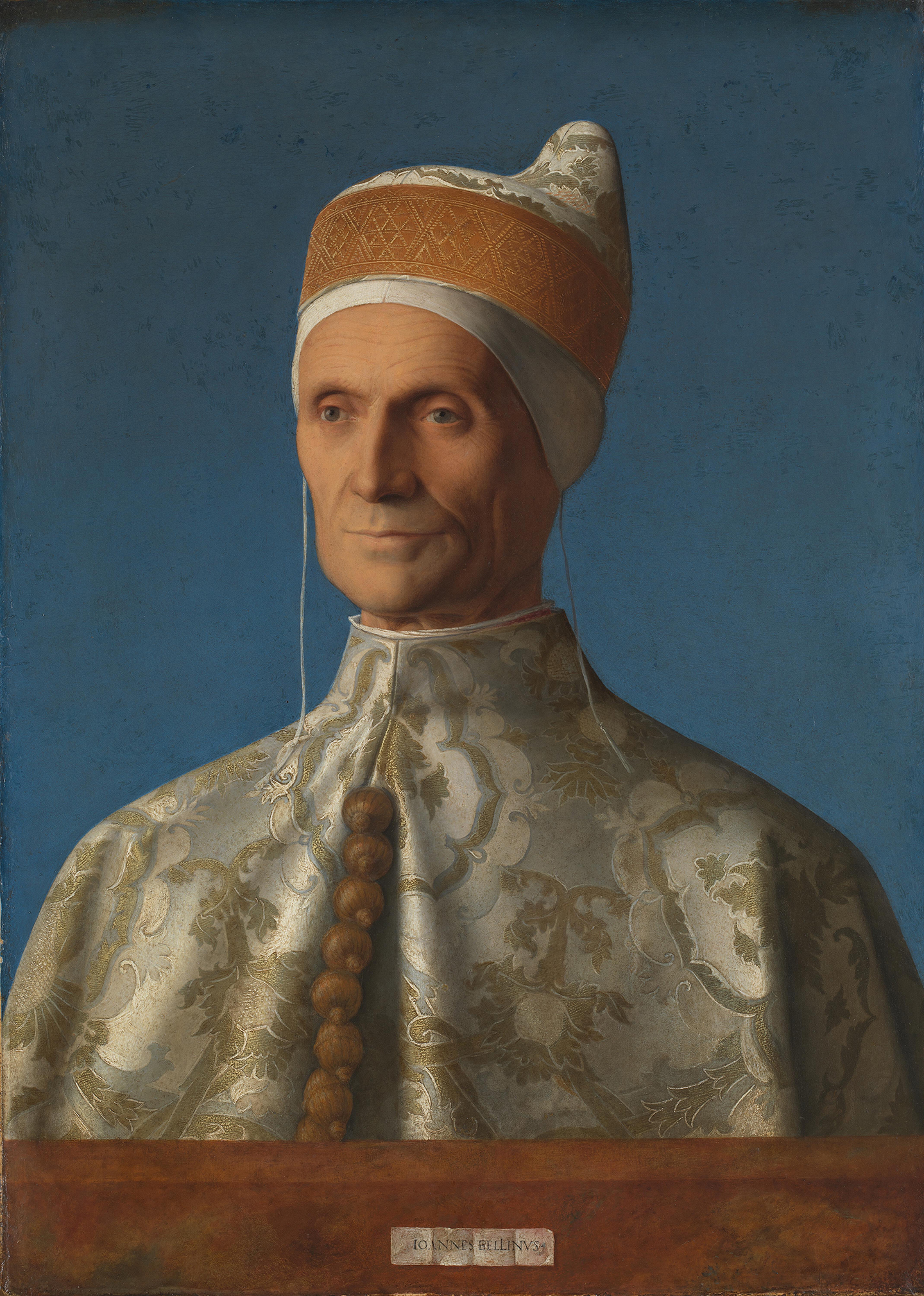

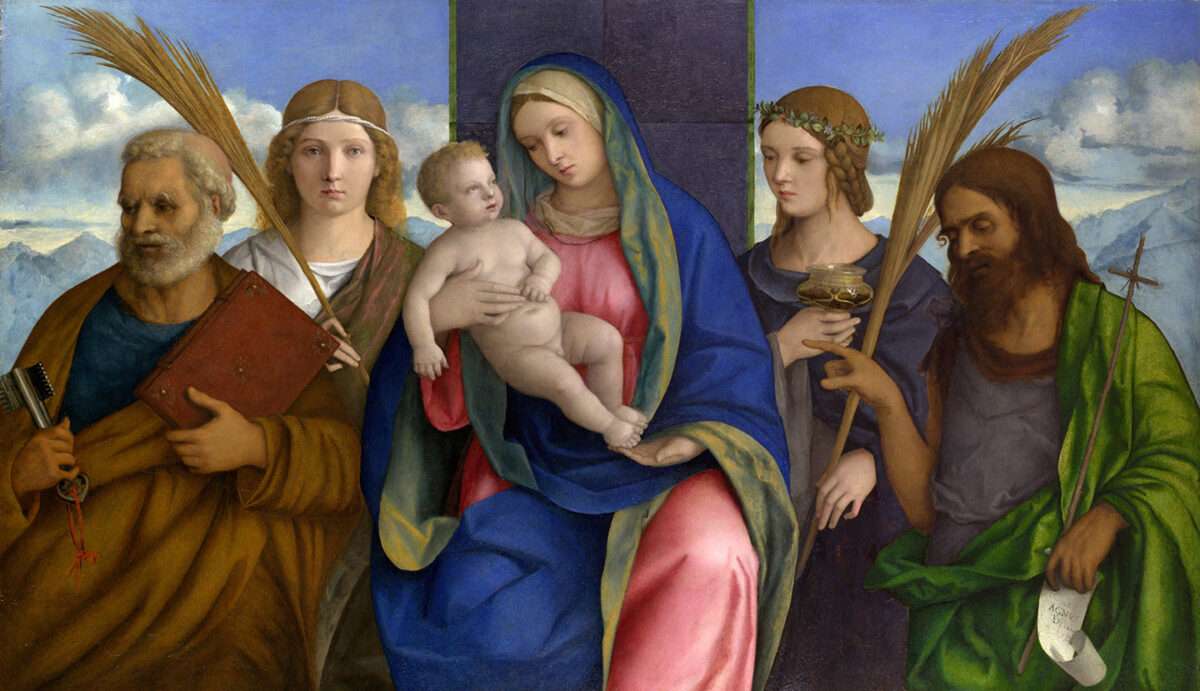
While a photograph of Giovanni Bellini’s “Portrait of Doge Leonardo Loredan” may give the illusion of a photographed actor in costume rather than a painted portrait; the artwork displays exquisite but restrained beauty. The doge’s robe and face appear to have the realistic textures of silk and skin: The folds in the silk and creases in the face are true to life. Ironically, this portrait probably receives more unfair criticism than any other work of art.
The paradox is due to the fact that Bellini’s painting is perfectly suited to a comparison of his work with that of his student Titian’s. Titian later painted a portrait of one of Loredan’s successors, Doge Andrea Gritti. As common for portraits of the age, both depict the head and upper torso against a plain background. Bellini’s work was claimed to exemplify “bland conventionality” in comparison to Titian whose skills were generally accepted to have surpassed his illustrious predecessors.
In reality, Bellini’s painting crowned a lifetime of innovation and was a milestone in the transition from the early to the High Renaissance. It served as a foundational work for the great Venetian school and helped establish a medium which would dominate painting for centuries.
When Bellini was born circa 1430, Renaissance art and architecture was in its earliest stages. In 1401, Italian architect and sculptor Filippo Brunelleschi (1377–1446), effectively initiated it by returning to classical Greek and Roman architectural aesthetics. Soon, his friend Donatello (circa 1386–1466) was sculpting in the combination of classicism (conformity to ancient Greek and Roman theories of beauty) and naturalism (accurate depiction of the physical world) that was to define Renaissance art. Masaccio (1401–1428) brought that combination into painting in the mid-15th century.
Bellini’s formation as an artist occurred just as Renaissance painting was beginning to slowly progress. The understanding of painters to give a two-dimensional surface the depth and illusion of three-dimensionality was fairly primitive despite advances resulting from Masaccio’s reintroduction of linear perspective. Coloration was in a similar state, generally ranging from semi-realistic to wildly artificial.
Early works by Bellini demonstrate both the advances and the shortcomings of the time. Compared to late medieval works such as Giotto’s “Lamentation” (circa 1304–1306), Bellini’s earlier painting “The Agony in the Garden” (circa 1458–1460) reveals remarkable growth. But coloration and the impressions of three-dimensionality and depth still remained underdeveloped. Fortunately for Bellini, one of the most important perfecters of the latter qualities was his brother-in-law—the great Andrea Mantegna.
Mantegna’s guidance greatly aided Bellini’s development, though the two became inversions of each other. Mantegna rapidly developed technical skill and just as rapidly improved artistic techniques. Stylistically, he was a man of the transitional Early Renaissance. During that period the basic elements of Renaissance art had been established and were being built upon, having not yet reached their mature development.
Unlike Mantegna, Bellini took longer to develop his skill. Yet after decades as an early Renaissance painter, he became one of the first artists to transition into the High Renaissance aesthetics. His “Portrait of Doge Leonardo Loredan” was among the works which brought about and marked that transition.
Bellini also played a major role in initiating a transition to oil on canvas as the standard medium for painting. This had tremendous benefits. Italian painting had previously been dominated by fresco and tempera. Because fresco is painted into walls and dries quickly, the scope for experimentation is limited. Changes require removing and repeating a significant section of the wall. Tempera holds less pigment than other forms of paint, making it harder to achieve realistic color.
Oil on canvas gives artists more time to work, allows for more experimentation and tweaking, facilitates finer detailing, and offers more desired colors. Bellini himself introduced the elegantly realistic coloration which would become the defining characteristic of the Venetian school of painting.
Titian’s genius certainly built on that foundation to create works that surpassed Bellini’s. But the degree of improvement from Bellini’s work to Titian’s was certainly more modest in comparison to the advancement between Bellini’s earlier and later works of art.
Bellini was among the first artists to paint fully realistic depictions of people. For the most part, he brought this mature naturalism only into portraits of people in formalized poses. Titian, however, brought that maturity to works depicting people as would look when they “stop for a picture.” On occasion, he even gave his work the impression of a paused video recording that was later perfected by Caravaggio.
More famously, however, was Titian’s emotional intensity, sense of drama, and insight into his subjects’ personalities. This was a real improvement when depicting emotionally charged events like those surrounding the crucifixion of Christ.
But Bellini’s critics tend to insist that all art be emotionally charged and dramatic, even when there is nothing inherently emotional or dramatic about their subject matter. These critics effectively deny that unemotional, non-dramatic art can be more true to life for the depiction of certain subjects and contexts than emotional, dramatic representation would be—and just as visually beautiful. When painting in these contexts, Bellini could create works which rank among the greatest of all time and which capture personality subtly—such as through the notable but understated gentleness in the eyes of Doge Loredan.
Bellini was able to achieve such excellence because he was one of the most creative and innovative artists in history. He started out as a painter when the Renaissance was just beginning. His early works have the same relative primitiveness as those in which Masaccio laid the Renaissance’s first foundations. Over the next decades, with his best works comparable to those of Raphael’s, he brought Renaissance painting nearly to its highest level of accomplishment.

